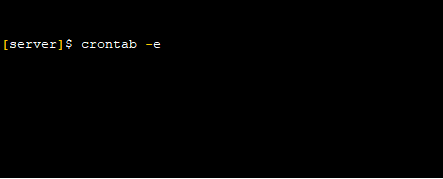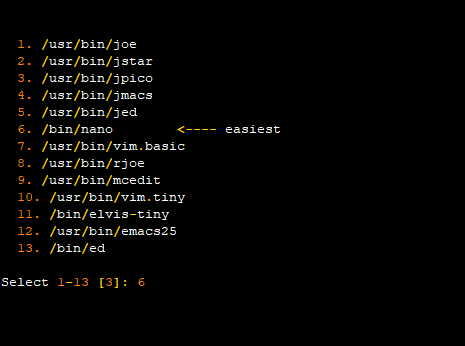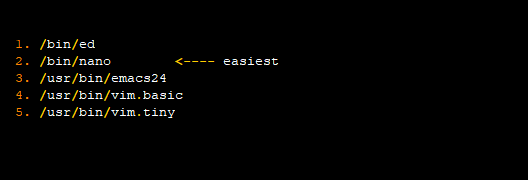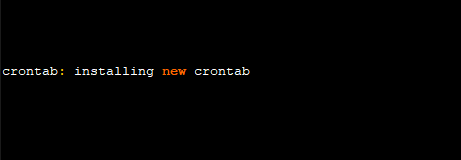What is Cron Job?Cron is a work schedule hypervisor that runs assignments at prescribed times. These activities are referred to as Cron jobs, and they are typically used to optimize security management or management. For instance, you could use Cron to run the application like storing data database systems or information, redesigning the structure with automatic updates, verifying disk space utilization, sending messages, etc. Cron employment can be meant to launch every half hour, minute, day after the month, quarter, week of the year, or a confluence of these time intervals. The Cron kernel is an integrated Linux functionality that schedules the execution of programs on your scheme. Cron searches the crontab (Cron tables) for previously established instructions and files. You can set up a Cron job to immediately manage code or other instructions by using a specific format. Cron Table fileCrontab (Cron table) is a file format that stipulates the Cron increase in job. Crontab documents are classified into two types.
Consumers' crontab documents are labeled after the consumer's name, and their destination differs depending on the OS (operating system). Crontab documents are saved in the /var/spool/cron folder in Red Cape allocations, including CentOS, while they are processed in the /var/spool/cron/crontabs database Unix and Debian. Even though you can sequentially modify the customer crontab documents, it is suggested that you utilize the crontab prompt. The /etc/crontab document and the plugins in the /etc/cron.d folder are platform crontab documents that only software developers can access. Codes can also be placed in the /etc / cron. Hourly, daily, weekly, monthly files in most Linux distros, and they will be implemented each month/week/ day/ hour. Crontab SyntaxCron looks through the system settings for a catalog of instructions to run. To perceive the sections in the crontab setup desks, the kernel employs a specific format. To establish a Cron task, we must first understand the essential components that comprise this idiom. A crontab path should take the following format:
e f g h i /directory/command output
So, the components of a cron command are as follows:
The command's first five sectors are statistics that describe when and how frequently the instruction operates. Each role, which means a unique value, is separated by an orbit. The following table describes the distinct outcomes for the disciplines as well as the instance object model:
The instruction to be executed is specified in the following section. It symbolizes the accurate database and the file type of the code or directives you want Cron to run. For Instance:
/root/backup.sh
In the preceding instance, the instruction navigates to the platform's root directory and executes the backup.sh code. You are free to use any code or prompt you want.
When Cron operates, it forwards an alert to the client of the crontab directory by the switch. This is a practical method for keeping a record of assignments. Please remember that standard or insignificant assignments can quickly fill up your mailbox. Because this is an additional component, you can avoid this circumstance by turning off the throughput email. To disable the mailing outcome, execute the new sequence after the composition and prompt areas: >/dev/null 2>&1.
* * * * * directory/command/ >/dev/null 2>&1
Crontab OperatorsCron syntax also utilizes operators for performance. Operators are large inland that operates effectively on the Cron attribute values. The operators are discussed below-
The asterisk operator denotes any significance or already. Suppose you see an asterisk (*) in the Hour domain, it implies the job will be done every hour. It represents all values. Utilization of this operator is to gather operating for the entire month or week.
You can stipulate a range of items for regurgitation using the comma operator. It also defines distinct unique values. For Instance, if you enter 2,5,8 in the Hour domain, the assignment will execute at 2 a.m., 5 a.m., and 8 a.m.
You can stipulate a set of outcomes using the hyphen operator. If you enter 2-5 in the Weekday domain, the assignment will execute every weekday (From Tuesday to Friday). It also represents a set of parameters.
The slash operator allows you to specify values that will be repeated over a specific interval between them. This operator can also be used to separate a number into various stages. For example, if you have */4 in the Hour field, it means the action will be performed every four hours. It is also equivalent as clarifying 0,4,8,12,16,20. You can utilize a range of data rather than an asterisk even before the slash operator. For example, 1-30/10 indicates the similar as 1,11,21. System-wide Crontab documentSystem-wide crontab directories have a completely different syntax than client crontabs. It also includes a binding user domain that stipulates which customer will execute the Cron task.
* * * * * <username> command (s)
Predesignated MacrosTo identify prevalent duration, many special Cron timetable modules are used. You can substitute these shortcut keys for the five-column date requirement. They are discussed below-
It is used to execute the particular job once a year on January 1st. It is analogous to 0 0 1 1 *.
It executes the required tasks once a decade, at midnight on the 1st of the period. @ monthly is equivalent to 0 0 1 * *.
It is used to operate the particular job every week on Saturday at noon. @weekly is equitable to 0 0 * * 0.
It is used to access the precise task at midnight every day. 0 0 * * * is analogous to 0 0 * * *.
@hourly can be used to execute the particular job at a single time at starting of the hour. It is also similar to 0****.
It is used to execute the specialized job at the time of desktop configuration. Crontab prompt in LinuxYou can use the crontab script to configure, perspective, or allow access to a crontab directory for formatting:
This directive is used to modify or develop a crontab directory if one does not already emerge.
This command is used to remove the existing crontab directory.
Crontab -l command help you to show the crontab information.
It is used to modify the crontab files of other users. This alternative necessitates the use of system administrative access.
This directive is used to eliminate your existing crontab directory, prompting you before doing so. The crontab prompt uses the publisher indicated by the Graphic or Author configuration files to access the crontab directory. Crontab VariablesThe Cron sorcerer automatically adjusts many environment variables.
How to set up a Cron job?The steps below will show you how to create a personalized Cron job underneath your Shell account. These guidelines suggest that you have not yet created a Cron job in the Window, so the crontab folder is empty. Step 1: First, you need to sign in to your account through SSH as the Kernel administrator you want to build the Cron task. Step 2: Now, execute the below-mentioned command while signed in to access your crontab address. 
There doesn't emerge to be a MAILTO line in your crontab file. You provide a domain where cronjob production will be distributed for performance purposes. If you do not want to collect cronjob outcome, manually plug, and no cronjob outcome will be addressed. Step 3: After entering the email address (or leaving it undefined), you must select a word processor. Step 4: Now, you are required to choose an editor. Run the 'select-editor' command to make changes later. 
Step 5: You will then be prompted to select a code editor to open this document. #6 employs the software nano, which is the most straightforward alternative. If you are signed into a Host machine, the following commands above will appear. If you log into a Debian-based VPS (virtual private server), you can see the above-given list instead. Step 6: Now, Choose a script editor. Run 'select-editor' to make changes later. 
Step 7: A empty crontab document is shown. Insert the file for your Cron work here. This illustration executes a file called mail.php with the mail 'username'. It should be the same SSH account as the one you're using. At 8:13 p.m., this instance executes the Cron task. 
The order is divided into two sections. The first section must provide the route to the application used to execute the Cron task. Assume you have a PHP file called script.php in the realm's directory:
To execute this instruction, insert the link to the preferred PHP version, accompanied by a window, and then the route to the document:
You could also utilize the standard edition by substituting 'PHP' for the entire route. Step 8: The file should be saved. The below-given answer should be displayed: 
The cron job can now operate at 8:13 p.m. each day. Limitations on CrontabYou can regulate which information is accessible to the crontab authority by editing the /etc/cron.deny and /etc/cron.allow documents. The documents are essentially a group of usernames, one per accordance. By extension, only the /etc/cron.deny file exists and is bare, implying that the crontab script is accessible to all the consumers. Append the user id to this directory if you'd like to reject a relevant access privilege to the crontab directives. Only the consumers mentioned in the /etc/cron.allow file can utilize the crontab script if it arises. Only consumers with administrative rights can utilize the crontab instruction if neither of the documents arises.
Next TopicPH scale
|
 For Videos Join Our Youtube Channel: Join Now
For Videos Join Our Youtube Channel: Join Now
Feedback
- Send your Feedback to [email protected]
Help Others, Please Share










